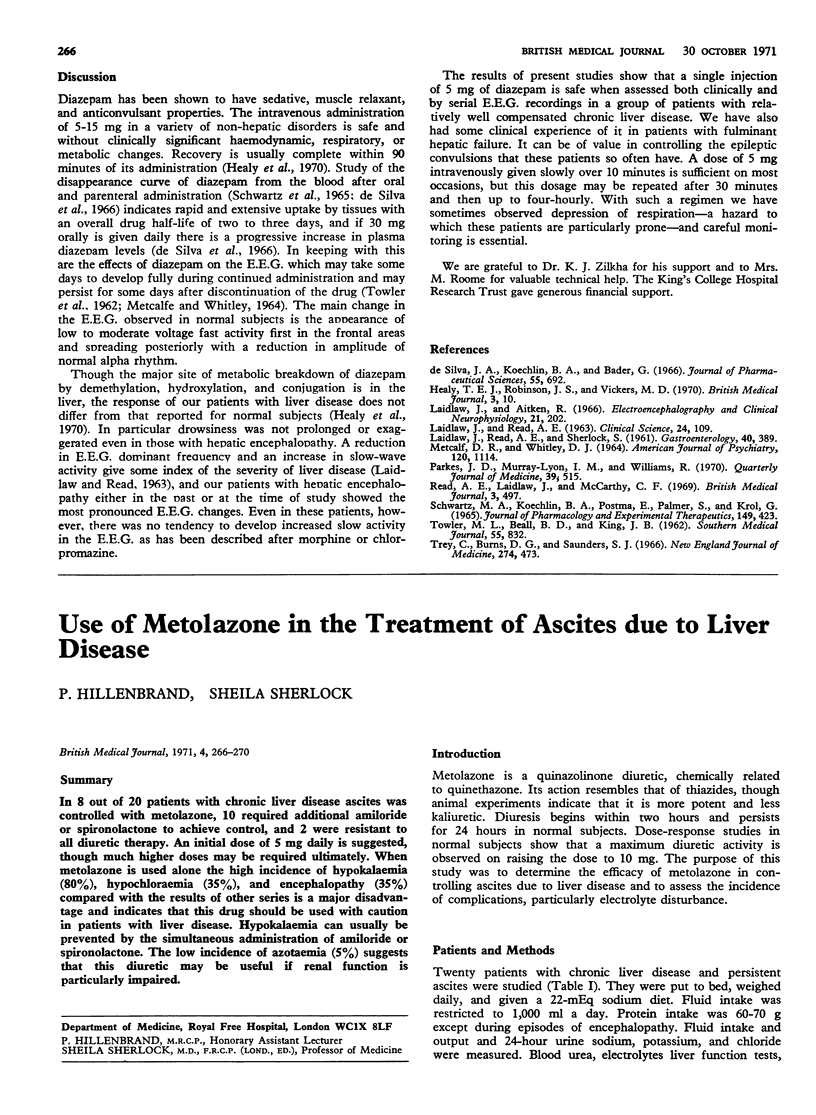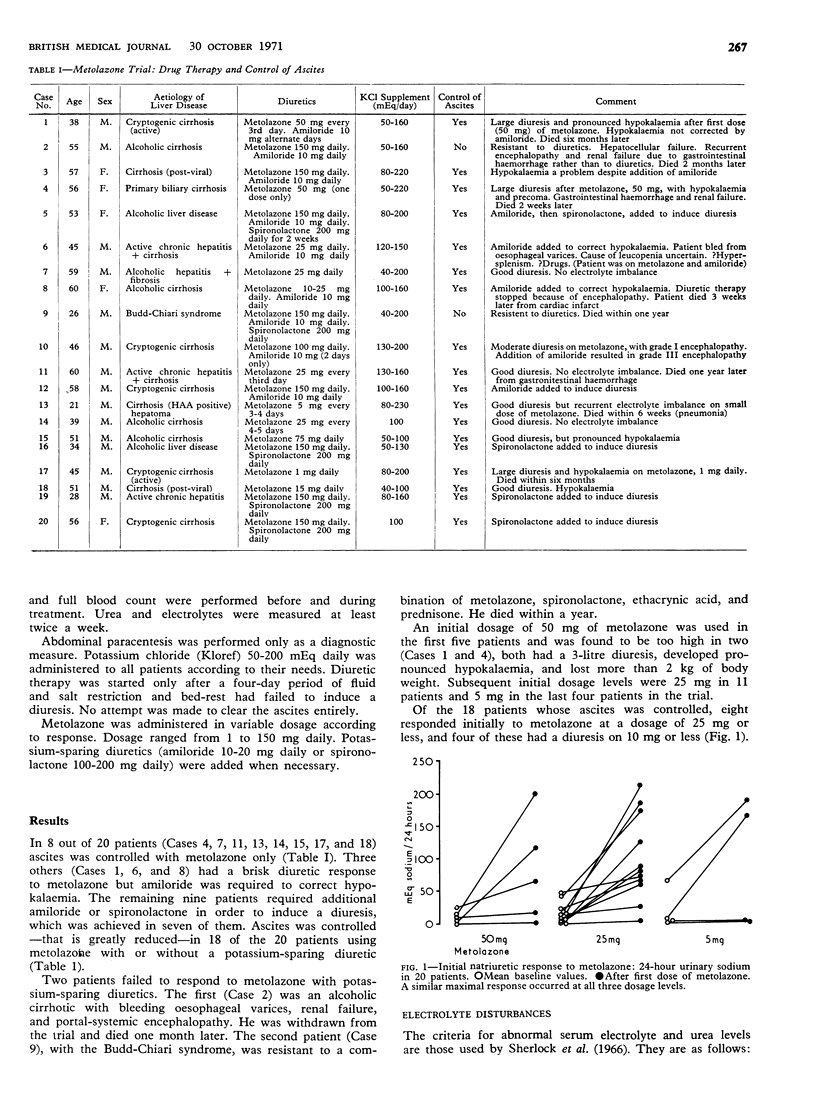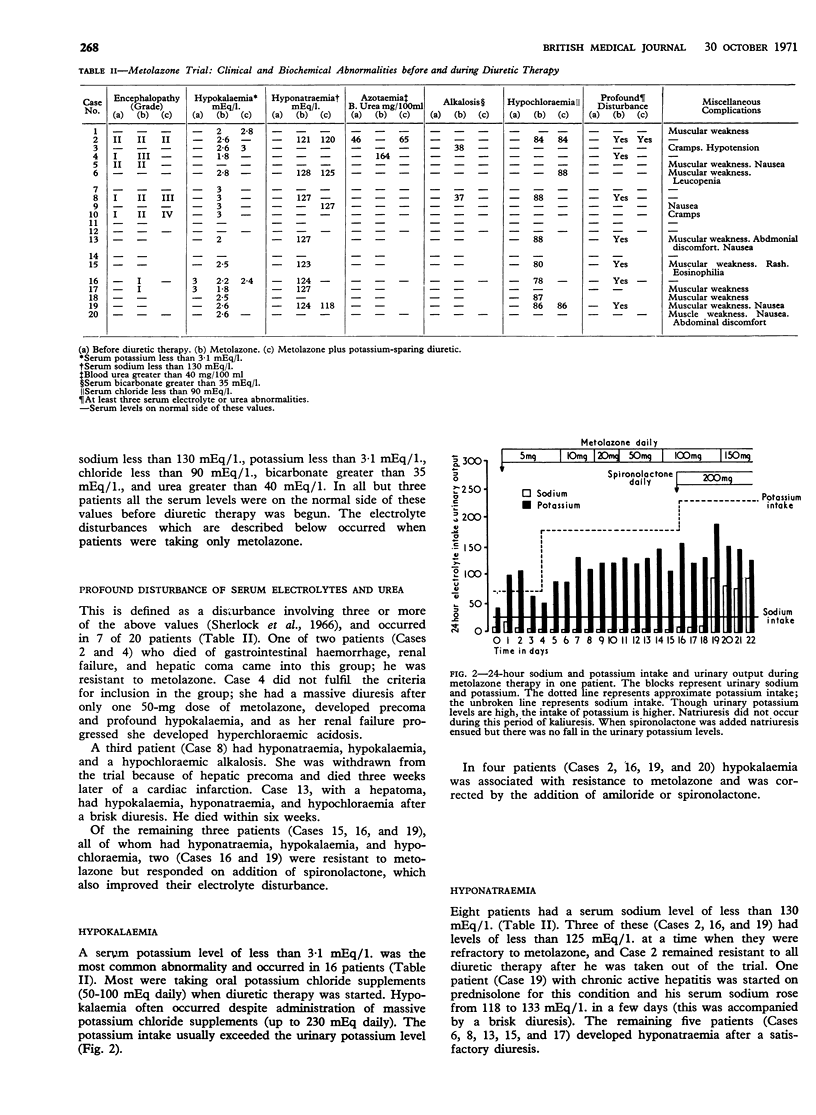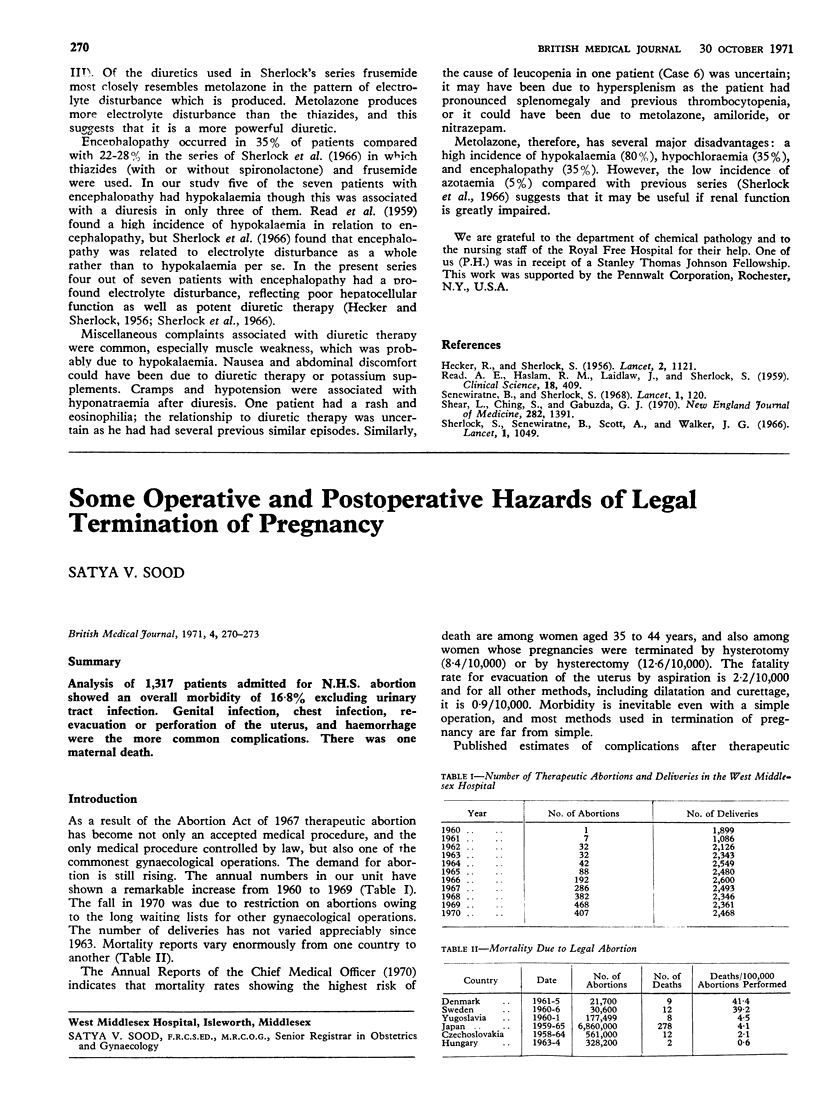Abstract
In 8 out of 20 patients with chronic liver disease ascites was controlled with metolazone, 10 required additional amiloride or spironolactone to achieve control, and 2 were resistant to all diuretic therapy. An initial dose of 5 mg daily is suggested, though much higher doses may be required ultimately. When metolazone is used alone the high incidence of hypokalaemia (80%), hypochloraemia (35%), and encephalopathy (35%) compared with the results of other series is a major disadvantage and indicates that this drug should be used with caution in patients with liver disease. Hypokalaemia can usually be prevented by the simultaneous administration of amiloride or spironolactone. The low incidence of azotaemia (5%) suggests that this diuretic may be useful if renal function is particularly impaired.
Full text
PDF




Selected References
These references are in PubMed. This may not be the complete list of references from this article.
- HECKER R., SHERLOCK S. Electrolyte and circulatory changes in terminal liver failure. Lancet. 1956 Dec 1;271(6953):1121–1125. doi: 10.1016/s0140-6736(56)90149-0. [DOI] [PubMed] [Google Scholar]
- READ A. E., LAIDLAW J., HASLAM R. M., SHERLOCK S. Neuropsychiatric complications following chlorothiazide therapy in patients with hepatic cirrhosis: possible relation to hypokalaemia. Clin Sci. 1959 Aug;18:409–423. [PubMed] [Google Scholar]
- Senewiratne B., Sherlock S. Amiloride ('MK 870') in patients with ascites due to cirrhosis of the liver. Lancet. 1968 Jan 20;1(7534):120–122. doi: 10.1016/s0140-6736(68)92725-6. [DOI] [PubMed] [Google Scholar]
- Shear L., Ching S., Gabuzda G. J. Compartmentalization of ascites and edema in patients with hepatic cirrhosis. N Engl J Med. 1970 Jun 18;282(25):1391–1396. doi: 10.1056/NEJM197006182822502. [DOI] [PubMed] [Google Scholar]
- Sherlock S., Senewiratne B., Scott A., Walker J. G. Complications of diuretic therapy in hepatic cirrhosis. Lancet. 1966 May 14;1(7446):1049–1052. doi: 10.1016/s0140-6736(66)91005-1. [DOI] [PubMed] [Google Scholar]


